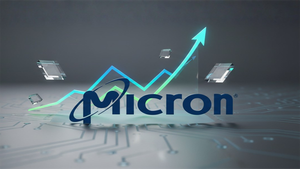
In an increasingly fragmented global technology landscape, China's unwavering commitment to semiconductor self-sufficiency, encapsulated by its ambitious "China Chip" initiative, is gaining significant traction. At the forefront of this national endeavor is Slkor, a burgeoning national high-tech enterprise, whose General Manager, Song Shiqiang, is championing a robust long-term strategy centered on brand building and technological autonomy. This strategic push, as of late 2025, is not only reshaping China's domestic semiconductor industry but also sending ripples across the global tech ecosystem, with profound implications for AI hardware development and supply chain resilience worldwide.
Slkor's journey, deeply intertwined with the "China Chip" vision, underscores a broader national imperative to reduce reliance on foreign technology amidst escalating geopolitical tensions and export controls. The company, a self-proclaimed "steadfast inheritor of 'China Chips'," is strategically positioning itself as a critical player in key sectors ranging from electric vehicles to AI-powered IoT devices. Its comprehensive approach, guided by Song Shiqiang's foresight, aims to cultivate a resilient and globally competitive Chinese semiconductor industry, marking a pivotal moment in the ongoing race for technological supremacy.
Engineering Autonomy: Slkor's Technical Prowess and Strategic Differentiation
Slkor, headquartered in Shenzhen with R&D hubs in Beijing and Suzhou, boasts a core technical team primarily drawn from Tsinghua University, signifying a deep-rooted commitment to domestic intellectual capital. The company has achieved internationally advanced capabilities in silicon carbide (SiC) power device production processes, a critical technology for high-efficiency power electronics. Its intellectual property portfolio is continuously expanding, encompassing power devices, sensors, and power management integrated circuits (ICs), forming the foundational building blocks for next-generation technologies.
Established in 2015, Slkor's strategic mission is clear: to emerge as a stronger, faster, and globally recognized industry leader within 20-30 years, emphasizing comprehensive autonomy across product development, technology, pricing, supply chain management, and sales channels. Their extensive product catalog, featuring over 2,000 items including diodes, transistors, various integrated circuit chips, SiC MOSFETs, and 5th-generation ultrafast recovery SBD diodes, is integral to sectors like electric vehicles (EVs), the Internet of Things (IoT), solar energy, and consumer electronics. Notably, Slkor offers products capable of replacing those from major international brands such as ON Semiconductor (NASDAQ: ON) and Infineon (OTC: IFNNY), a testament to their advancing technical capabilities and competitive positioning. This focus on domestic alternatives and advanced materials like SiC represents a significant departure from previous reliance on foreign suppliers, marking a maturing phase in China's semiconductor development.
Reshaping the AI Hardware Landscape: Competitive Implications and Market Dynamics
Slkor's ascent within the "China Chip" initiative carries significant competitive implications for AI companies, tech giants, and startups globally. The accelerated drive for self-sufficiency means that Chinese tech giants, including Huawei and Semiconductor Manufacturing International Corporation (SMIC), are increasingly able to mass-produce their own AI chips. Huawei's Ascend 910B, for instance, is reportedly aiming for performance comparable to Nvidia's (NASDAQ: NVDA) A100, indicating a narrowing gap in certain high-performance computing segments. This domestic capability provides Chinese companies with a strategic advantage, reducing their vulnerability to external supply chain disruptions and export controls.
The potential for market disruption is substantial. As Chinese companies like Slkor increase their production of general-purpose semiconductors, the global market for these components may experience stagnation, potentially impacting the profitability of established international players. While the high-value-added semiconductor market, particularly those powering AI and high-performance computing, is expected to grow in 2025, the increased competition from Chinese domestic suppliers could shift market dynamics. Slkor's global progress, evidenced by rising sales through distributors like Digi-Key, signals its growing influence beyond China's borders, challenging the long-held dominance of Western and East Asian semiconductor giants. For startups and smaller AI firms globally, this could mean new sourcing options, but also increased pressure to innovate and differentiate in a more competitive hardware ecosystem.
Broader Significance: Fragmentation, Innovation, and Geopolitical Undercurrents
Slkor's strategic role is emblematic of a wider phenomenon: the increasing fragmentation of the global tech landscape. The intensifying US-China tech rivalry is compelling nations to prioritize secure domestic and allied supply chains for critical technologies. This could lead to divergent technical standards, parallel supply chains, and distinct software ecosystems, potentially hindering global collaboration in research and development and fostering multiple, sometimes incompatible, AI environments. China's AI industry alone exceeded RMB 700 billion in 2024, maintaining over 20% annual growth, underscored the scale of its ambition and investment.
Despite significant progress, challenges persist for China. Chinese AI chips, while rapidly advancing, generally still lag behind top-tier offerings from companies like Nvidia in overall performance and ecosystem maturity, particularly concerning advanced software platforms such as CUDA. Furthermore, US export controls on advanced chipmaking equipment and design tools continue to impede China's progress in high-end chip production, potentially keeping them several years behind global leaders in some areas. The country is actively developing alternatives, such as DDR5, to replace High Bandwidth Memory (HBM) in AI chips due to restrictions, highlighting the adaptive nature of its strategy. The "China Chip" initiative, a cornerstone of the broader "Made in China 2025" plan, aims for 70% domestic content in core materials by 2025, an ambitious target that, while potentially not fully met, signifies a monumental shift in global manufacturing and supply chain dynamics.
The Road Ahead: Future Developments and Expert Outlook
Looking forward, the "China Chip" initiative, with Slkor as a key contributor, is expected to continue its aggressive push for technological self-sufficiency. Near-term developments will likely focus on refining existing domestic chip designs, scaling up manufacturing capabilities for a broader range of semiconductors, and intensifying research into advanced materials and packaging technologies. The development of alternatives to restricted technologies, such as domestic HBM equivalents, will remain a critical area of focus.
However, significant challenges loom. The persistent US export controls on advanced chipmaking equipment and design software pose a formidable barrier to China's ambitions in ultra-high-end chip production. Achieving manufacturing scale, particularly for cutting-edge nodes, and mastering advanced memory technologies will require sustained investment and innovation. Experts predict that while these restrictions are designed to slow China's progress, overly broad measures could inadvertently accelerate China's drive for self-sufficiency, potentially weakening US industry in the long run by cutting off access to a high-volume customer base. The strategic competition is set to intensify, with both sides investing heavily in R&D and talent development.
A New Era of Semiconductor Competition: Concluding Thoughts
Slkor's strategic role in China's "China Chip" initiative, championed by Song Shiqiang's vision for brand building and long-term autonomy, represents a defining moment in the history of the global semiconductor industry. The company's progress in areas like SiC power devices and its ability to offer competitive alternatives to international brands underscore China's growing prowess. This development is not merely about national pride; it is about reshaping global supply chains, fostering technological fragmentation, and fundamentally altering the competitive landscape for AI hardware and beyond.
The key takeaway is a world moving towards a more diversified, and potentially bifurcated, tech ecosystem. While China continues to face hurdles in achieving absolute parity with global leaders in all advanced semiconductor segments, its determined progress, exemplified by Slkor, ensures that it will be a formidable force. What to watch for in the coming weeks and months includes the evolution of export control policies, the pace of China's domestic innovation in critical areas like advanced packaging and memory, and the strategic responses from established international players. The long-term impact will undoubtedly be a more complex, competitive, and geographically diverse global technology landscape.
This content is intended for informational purposes only and represents analysis of current AI developments.
TokenRing AI delivers enterprise-grade solutions for multi-agent AI workflow orchestration, AI-powered development tools, and seamless remote collaboration platforms.
For more information, visit https://www.tokenring.ai/.





